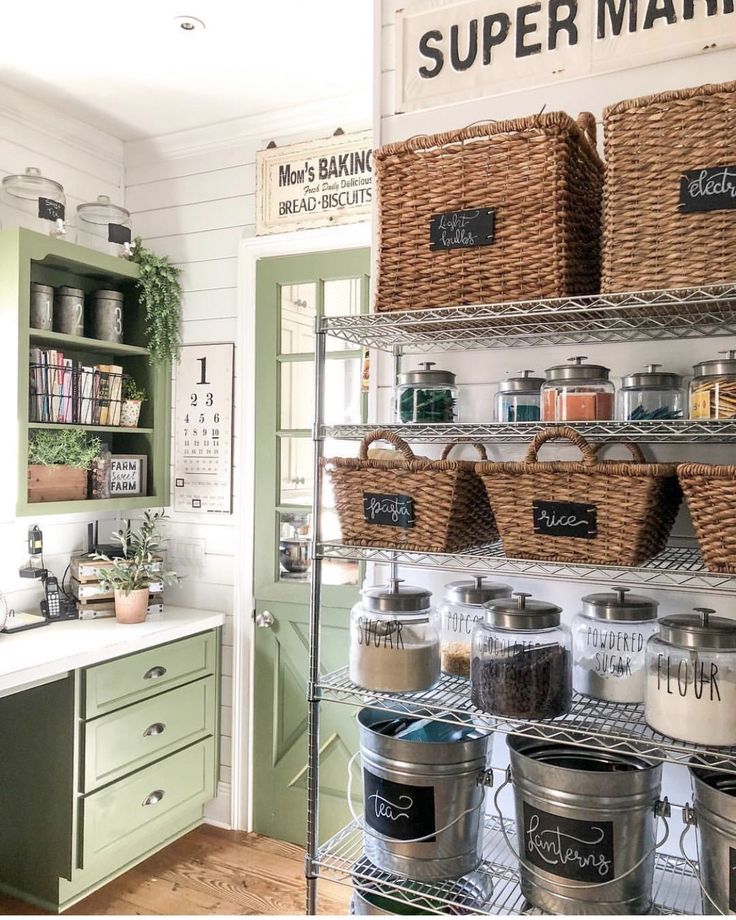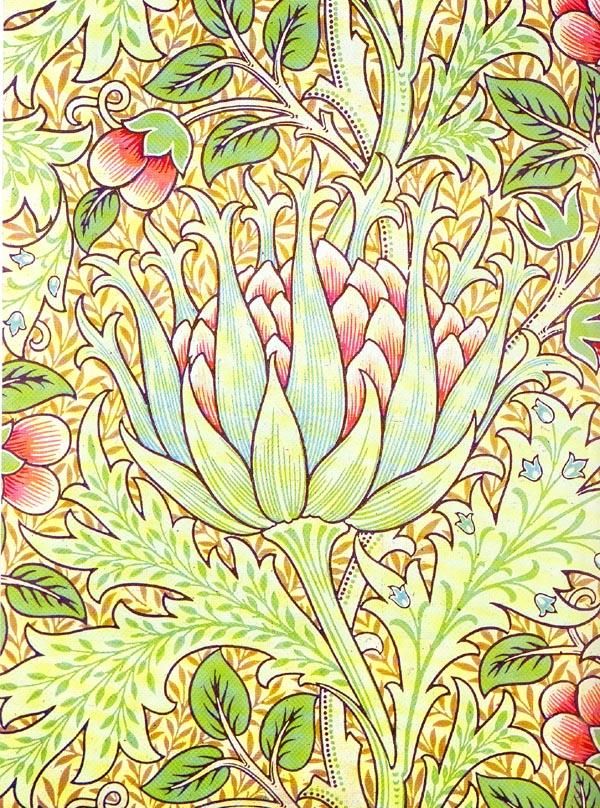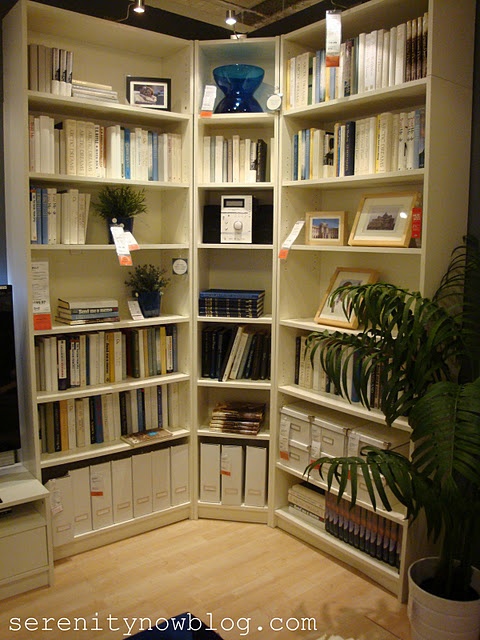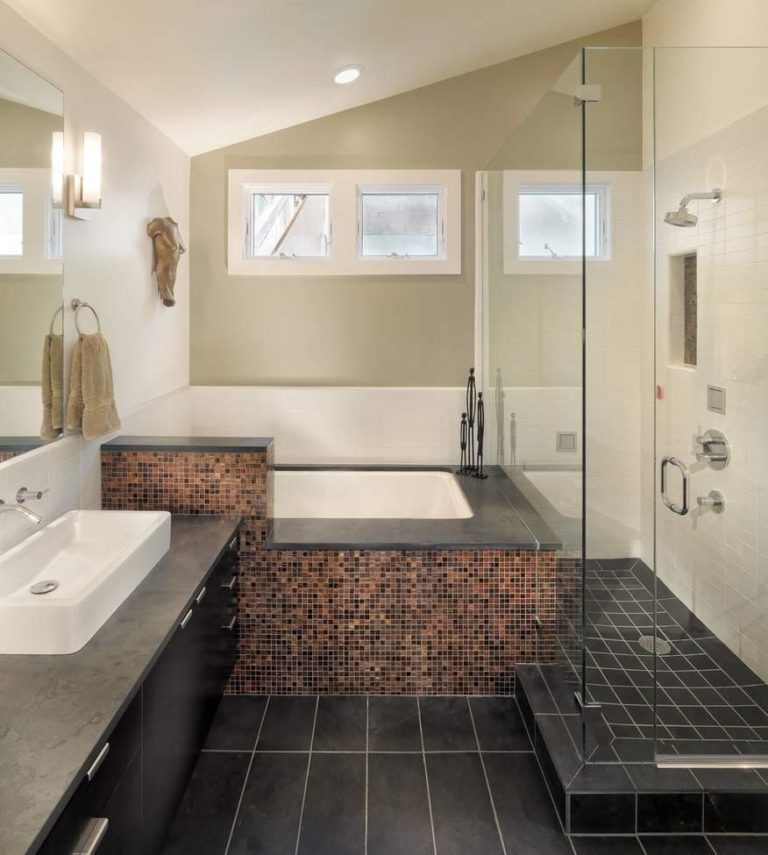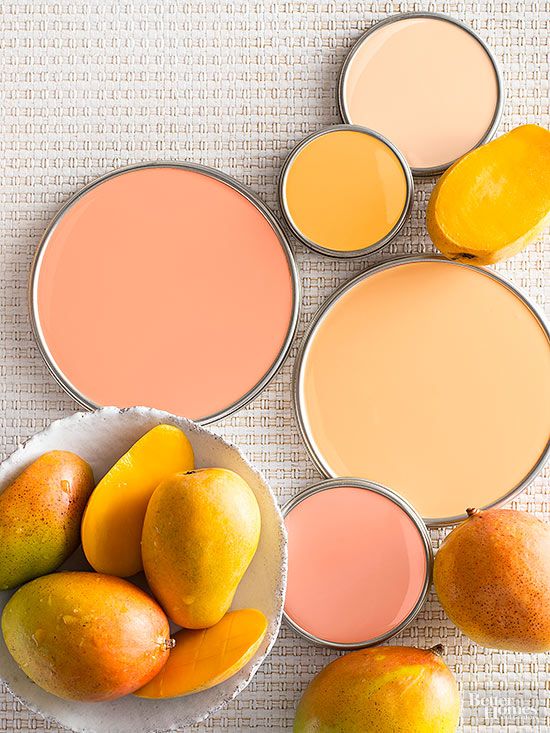Dry garden design ideas
How to plan a dry garden: ideas for plants and landscaping
(Image credit: The Dry Garden at Cambridge Botanic Garden)
If you're wondering how to plan a dry garden then you likely want a design that is low-maintenance and able to thrive during hot weather.
But you may not know that creating a dry garden is also one of the most sustainable backyard ideas to embrace.
Dry gardens don't rely on rainwater and irrigation to survive, favoring drought-tolerant planting to reduce reliance on watering
They require less weeding and mowing, and have minimal need for fertilizers and chemicals.
‘A dry garden is a garden that breathes. It is all about drainage, giving plants little opportunity to absorb water,' says garden designer James Basson of Scape Design .
Dry gardens are beloved of wildlife, too, providing a long season of nectar-producing plants for pollinators. ‘They create an ecosystem that encourages biodiversity,’ adds Basson.
When it comes to backyard landscaping ideas, using local, naturally sourced materials such as stone and gravel can cut down your carbon footprint from manufacturing and transport.
How to plan a dry garden – expert guide
Read on for our key principles for planning a dry garden. As well as larger yards, most of these suggestions can be incorporated into your small backyard ideas too.
Bear in mind every garden is unique, so you need to consider the local growing conditions, as well as understanding how your USDA hardiness zone has an impact.
‘Choose the right plant for the right place and plant at the right time of year to allow the plants to establish well, ideally fall or spring,’ adds garden designer Sue Townsend .
1. Check the conditions in your yard
(Image credit: James Basson)
To plan a dry garden, start by looking at your yard – you need to figure out how well its current conditions will support this style of planting and landscaping.
‘Analyze the site,’ says garden designer Thomas Hoblyn . ‘What’s the annual rainfall? What soil type do I have? How much sun does it get?
'These answers help to build up an ideal plant palette.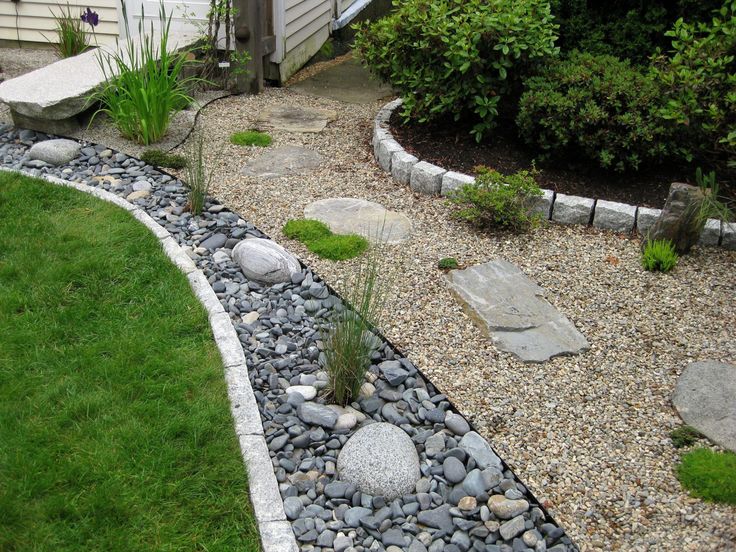 Try to work with what you’ve got rather than making drastic changes to the site.’
Try to work with what you’ve got rather than making drastic changes to the site.’
Bear in mind that your soil type needs to be fairly free draining in order to support many dry garden plants.
'Avoid or improve areas where water naturally sits, in particular, clay soils,’ adds Hoblyn.
If you have heavy, moisture-retentive soil then explore the possibilities offered by container gardening ideas.
2. Choose drought-tolerant plants
(Image credit: Beth Chatto)
Hardy plants with a low water requirement are central to dry gardens, so take inspiration from sunny Mediterranean garden ideas.
Always choose plants that naturally occur together in hot, dry regions as you can be confident they will look right together.
Aim for a mix of longer-lived species that will add structure and shorter-lived perennials and annuals. Grow them ‘lean’ without enriching the soil, and water sparingly once plants get established, then leave them to their own devices.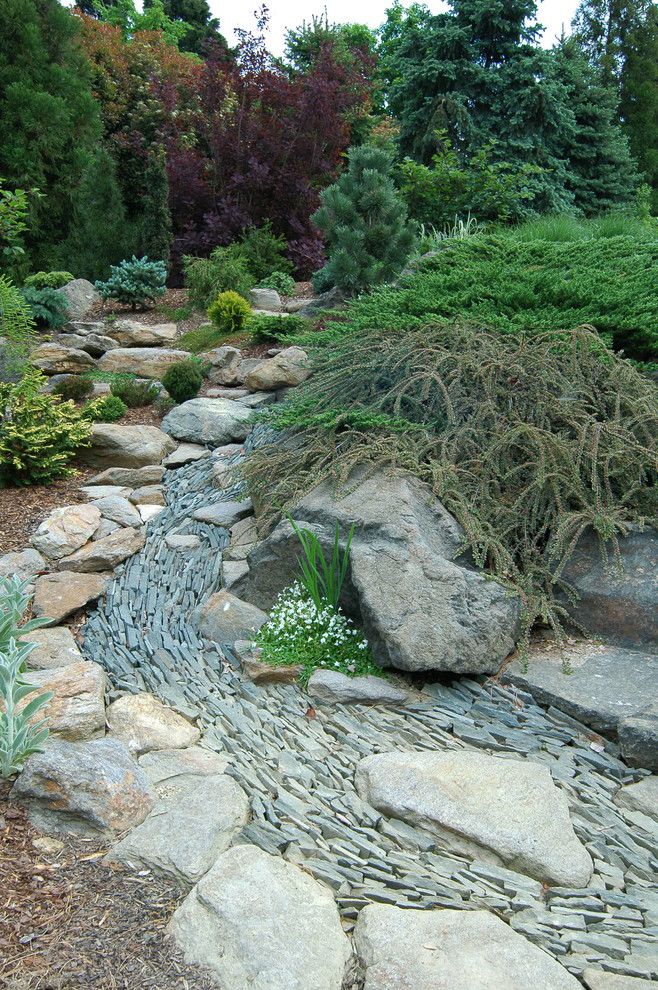
‘Broadly speaking, dry garden planting tends towards the more short-lived species so this should be embraced,’ says garden designer Jane Brockbank . ‘Have fun with annuals and self-seeders.’
Emphasis should be on contrasting shapes and textures, rather than flower color. Accentuate the different characteristics of plants so they enhance each other.
Repetition of color, shape or form creates a rhythm and guides the eye through the design, giving the planting a cohesive feel.
3. Add shrubs and trees for structure
(Image credit: Abigail Rex)
When planning your dry garden, it's tempting to prioritize annual flowers that offer a fast reward, but think about slower-growing structural plants first.
‘Start with a backbone of shrubs for year-round structure and only select trees that won’t cast dense shade,’ says Åsa Gregers-Warg, head gardener at Beth Chatto .
Too many of the best trees for shade will create excessive shadow in a dry garden, but some shade is always important, especially in warmer regions.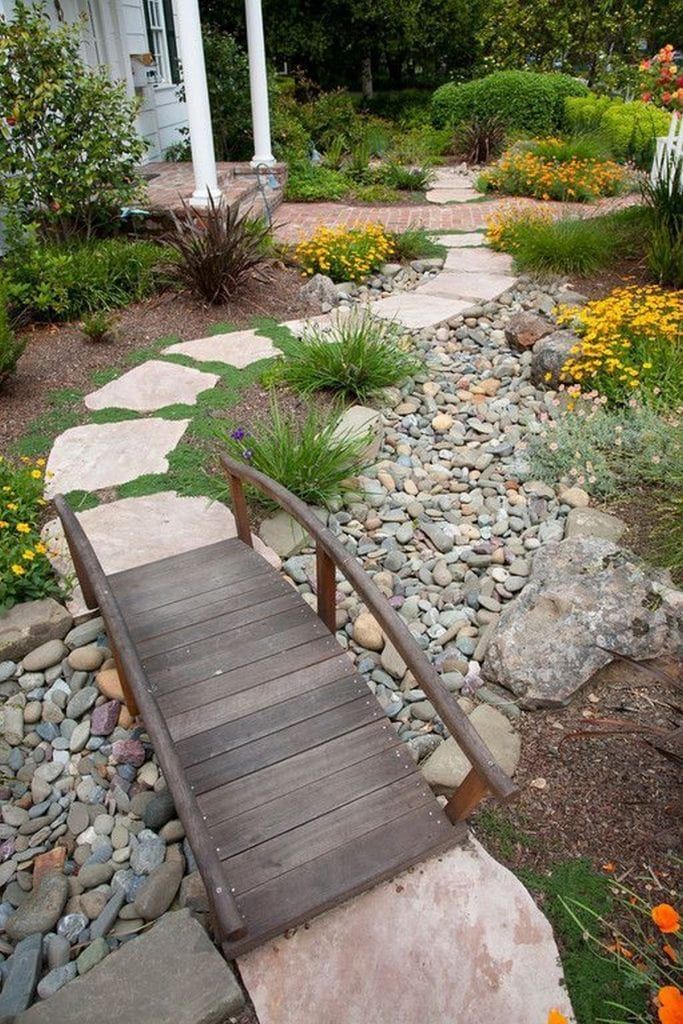
Consider planting a few carefully positioned drought-tolerant trees, such as Pyrus calleryana and eucalyptus.
4. Follow the light in your garden
(Image credit: Jane Brockbank)
Dry gardens should be fairly open and sunny, although some shade can work well in terms of expanding the range of plants that can be grown.
Every plant has its own preferred light levels, so look at which garden areas receive the most sun and shade, as you will need to position plants to suit.
Many drought-tolerant plants thrive in a sunny spot, but there are varieties that will grow in dry shade, such as Liriope muscari, euphorbia and Japanese anemones.
‘I have successfully made gravel gardens in urban areas where there is the inevitable mixture of sun and shade,’ says Brockbank.
‘Use a small percentage of plants that can tolerate both aspects and repeat them through the scheme to bring it all together.’
‘You should also observe where the light falls across the garden, as it can help you to decide where you plant certain plants such as grasses, which look fabulous backlit by the sun,’ adds Townsend.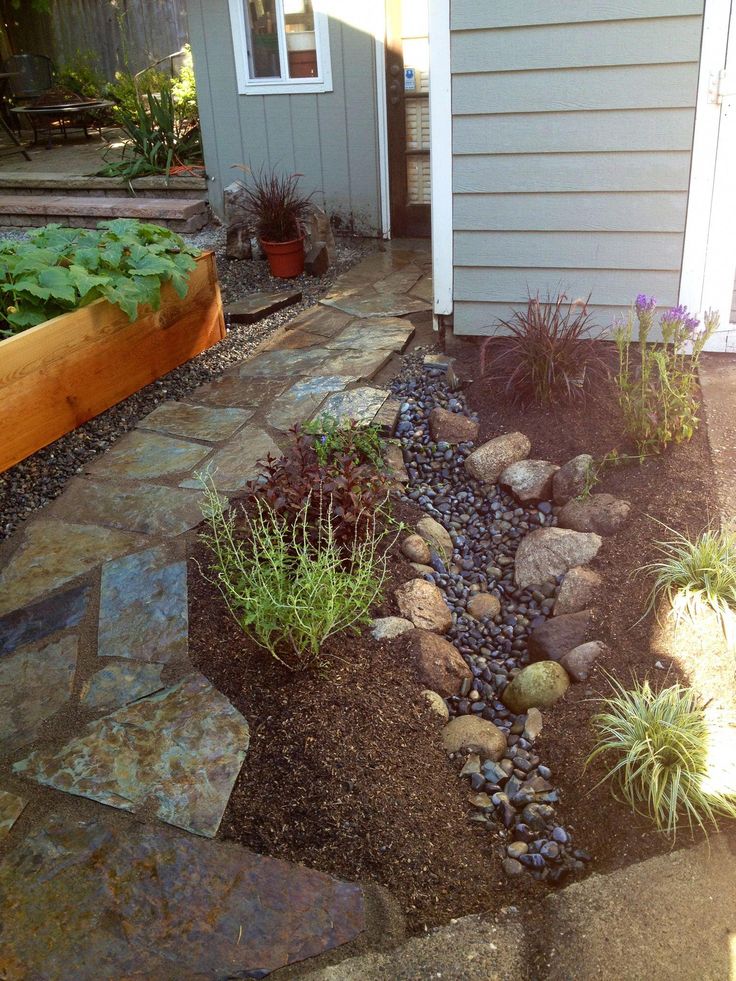
Learning how to grow ornamental grasses such as Stipa gigantea and Stipa tenuissima is a great way of adding softness to your garden.
5. Encourage deep roots to form
(Image credit: Olivier Filippi)
To minimize watering in a dry garden, it's important that plants are able to form long roots, so they can take moisture from deep beneath the surface.
To encourage this, plant young, small plants, as they will be more likely to send out stronger, longer roots than more mature or container-grown plants.
When planting, break up the soil as much as possible to allow roots to spread out, and avoid over watering.
Dry gardens require deep, occasional irrigation – lightly watering too often will encourage weak, shallow roots.
6. Reduce your lawn size
(Image credit: Clive Nichols)
Consider how much lawn is absolutely necessary in your dry garden, especially in a front garden, and eliminate it from places where its presence can’t really be justified.
Large lawns require a lot of maintenance with mowing and watering in hot weather, but they are also not the most visually interesting aspect of a yard.
‘Lawns are now so ubiquitous that they risk making our gardens bland and monotonous. Finding ways to replace them with something else is a decisive move against this dreary uniformity,' advises garden designer Olivier Filippi.
When it’s not an aesthetic choice, the need for a surface that can be walked on is often used to justify a large area of lawn. But the areas required for regular foot traffic are usually greatly overestimated.
7. Opt for groundcover planting
(Image credit: Olivier Filippi)
Replacing lawn enables us to regain surface, but what should we put in its place? Instead, opt for a ‘groundcover garden’ that is suited to local conditions and easy to maintain.
Mat-forming plants are suitable for growing green carpets that can be walked on. In areas where there is no foot traffic, create large beds of perennials and shrubs whose dense foliage prevents light getting through to the ground, thus limiting competition.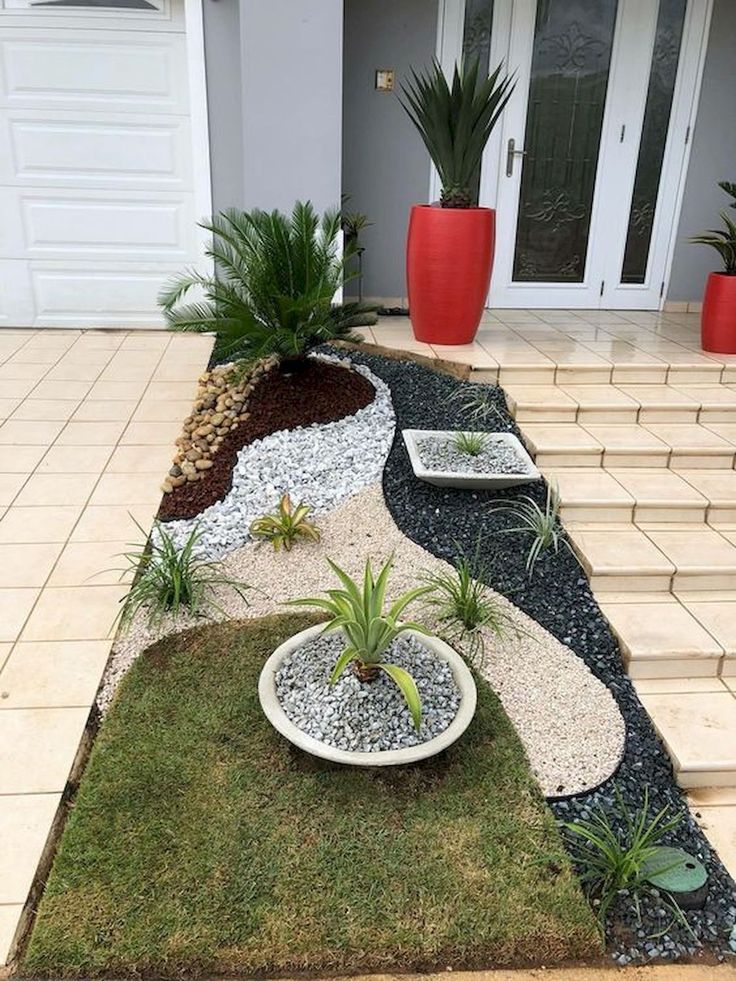
'Instead of trying to create a fixed picture, leave the groundcover to evolve from year to year in a scheme that takes its lead from the soil, climate and planting,' says Filippi.
Let ground cover plants like thyme and Stachys byzantina weave in between the taller plants.
Poor and stony soil is a bonus in gardens where you want to grow a wide range of groundcover plants with little maintenance.
'Weeds grow less easily than they would in rich soil, and groundcover plants can spread comfortably without the risk of being swamped by competitors,' adds Filippi.
8. Choose the best materials
(Image credit: Tom Hoblyn)
‘A huge amount of material needs to be worked into the ground for dry gardens to be planted. Gravel, sand, crushed hard core or concrete; in fact anything that will improve drainage,’ says Basson.
Picking a local loose stone or gravel for a mulch works well in rock garden ideas. These materials also fit in with the local environment and are good for reducing carbon footprint with transport.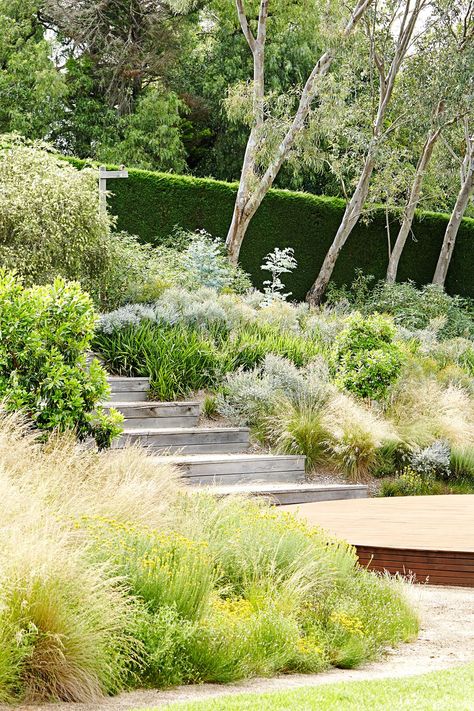
‘I would stick to natural durable materials, textured stone, rock, gravel and hardwoods,’ adds Brockbank.
9. Go for gravel surfaces
(Image credit: Bridgman)
Make gravel garden ideas central to your dry garden. Use this versatile landscaping material to cover pathways, seating and and driveway areas, but also use it around plants.
Providing a balance between plant and stone is characteristic of Mediterranean landscapes, but when used effectively can suppress the germination of weeds almost entirely.
‘A graded gravel mulch will prevent germination of unwanted vegetation and provide space,' says Basson.
Gravel also helps to conserve the warmth in the soil, helping warm weather plants to survive the colder seasons.
‘If you’re planting into deep gravel, be careful that the roots get contact with the subsoil,’ adds Hoblyn.
10. Add terraced areas to sloping yards
(Image credit: Mark Bolton)
If your yard is sloped or on an uneven site, then consider sloping garden ideas that will complement a dry garden scheme.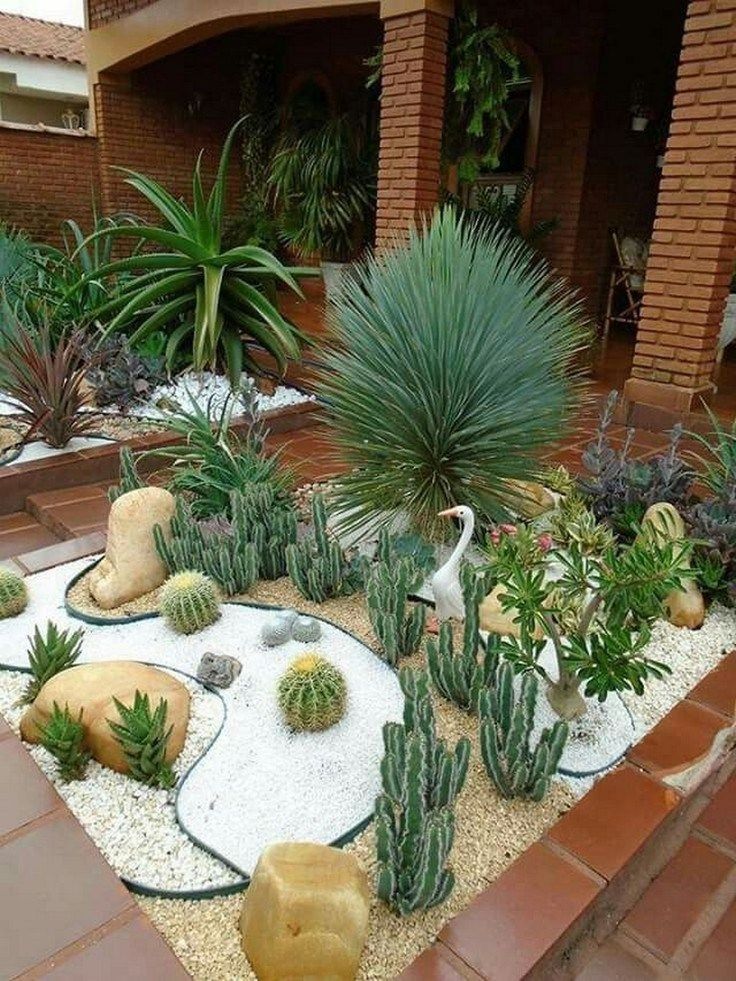
Stepped terraces are very evocative of the Mediterranean, and add a wealth of opportunity to create planting pockets with raised beds.
It's also essential for a sloping yard to be stepped with different flat levels if you want to use gravel, which would simply slide down a slope.
What is a dry garden?
A dry garden doesn't rely on rainwater and irrigation to survive. Instead, plants are chosen for their drought-tolerance.
Mediterranean-style planting is often favored for its ability to withstand dry conditions.
Dry gardens also require good drainage in order to allow the plants to thrive, so gravel is often mixed in with the soil to allow water to run freely.
However, all plants require some moisture, so it's vital they are able to establish strong, deep roots, are free from competition from weeds, and are mulched – usually with gravel – to help the soil to retain moisture.
As well as being less reliant on watering, a dry garden is also a more low-maintenance design, requiring less weeding, fertilizing and mowing than traditional gardens.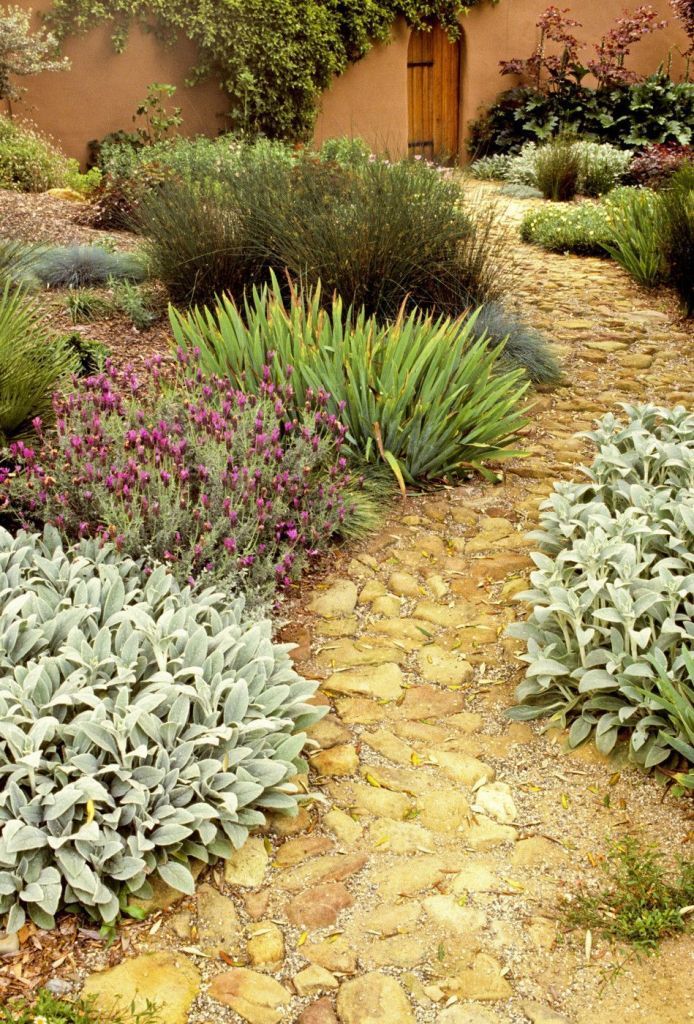
(Image credit: Sue Townsend)
What do you put in a dry garden?
Like any garden, a dry garden should comprise a sensitive mix of hard landscaping and planting.
Natural stone and gravel are the preferable materials for landscaping – ideally these should be locally sourced in order to reduce carbon emissions and help the garden harmonize with the local landscape.
Planting should be low maintenance and adapted to drier climates. According to the experts at Cambridge Botanic Garden, 'greyleaved, waxy-leaved or aromatic plants are indications of good adaptation to drought conditions'.
Their recommended plants include euphorbia, sedum, nepeta, geranium, bergenia, hebe, potentilla, santolina, lavender and rosemary.
Lifestyle journalist Sarah Wilson has been writing about gardens since 2015. She's written for Gardeningetc.com, Livingetc, Homes & Gardens, Easy Gardens and Modern Gardens magazines. Her first job on glossy magazines was at Elle, during which time a visit to the legendary La Colombe d'Or in St-Paul-de-Vence led to an interest in all things gardening.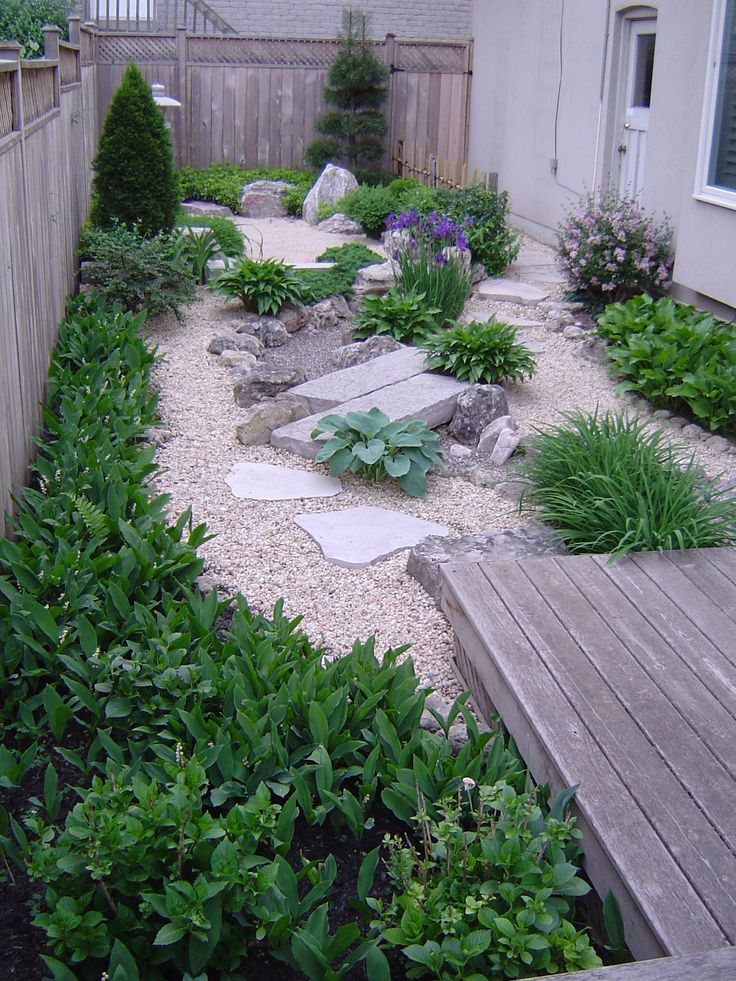 Later as lifestyle editor at Country Homes & Interiors magazine the real pull was the run of captivating country gardens that were featured.
Later as lifestyle editor at Country Homes & Interiors magazine the real pull was the run of captivating country gardens that were featured.
Low-Water Landscapes: 8 Ideas for Dry Gardens, from Designer Daniel Nolan
Please forget everything you think you know about dry gardens (especially if you are imagining harsh, spiky, half-dead-looking landscapes).
A low-water garden can have lush foliage, soft textures, and will welcome you into deep, luxurious shades of greens if Northern California-based landscape designer Daniel Nolan created it. Nolan, who made his name as an inventive in-house designer at San Francisco’s beloved Flora Grubb Gardens and is founder of the eponymous Daniel Nolan Design, recently collected 25 favorite projects (including some of his own) in a book, Dry Gardens.
Before he starts a new landscape project, Nolan says he “will ask myself: Is there a way we can reduce the water consumption?” Nolan’s gardens answer the question with personality, style, and an approachable feel.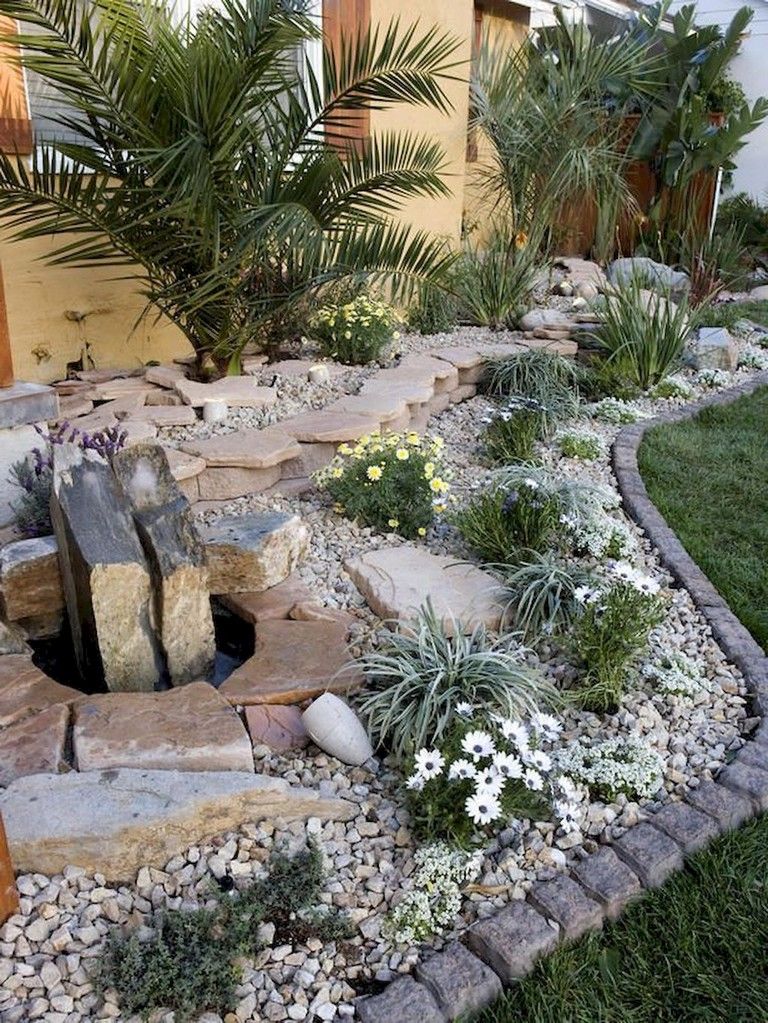 An expert on container gardens, as well, Nolan chooses plants that can thrive in dry soil with infrequent irrigation.
An expert on container gardens, as well, Nolan chooses plants that can thrive in dry soil with infrequent irrigation.
When we asked Nolan to share his secrets for designing a dry garden, he offered eight tips (illustrated beautifully in his book, with photographs by Caitlin Atkinson):
Photography from Dry Gardens, courtesy of Rizzoli.
1. Reduce the size of your lawn.
Above: In San Antonio, Texas, barrel cacti, agaves, and yuccas provide textural contrast to mature oak trees (Quercus robur). “This project masters the proportion of just enough lawn, the planting beds are generously wide, and the grass is kept to one area that is directly in front of the home making it feel welcoming but modern,” says Nolan.How do you reduce the size of your lawn? Nolan doesn’t oppose lawns, but he is considerate of appropriate sizes and scale. “Take any opportunity to expand your planting beds,” says Nolan. “Try spreading out your plants to give them ample room and show them off by selecting a gravel that contrasts and highlights their shape.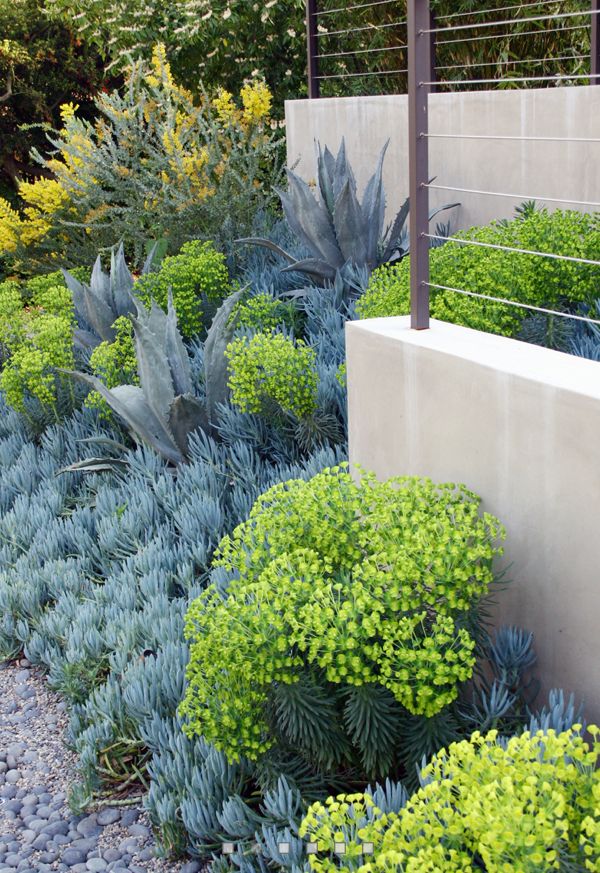 ”
”
2. Accessorize a swimming pool with sculptural silhouettes.
Above: Surrounding a swimming pool in Palm Springs, California, a garden looks like an art gallery full of sculpture. “The reflections of these architectural and graphic plants in the water creates an amazing experience,” says Nolan.How do you add drama to the landscape surrounding a swimming pool? “Don’t be afraid to experiment with your ground cover selections beyond mulch,” says Nolan. “I think selecting the right stone is as important as the plant selection, a bigger rougher stone or Mexican pebble will make your plants standout.”
3. Add native plants (they’ll naturally thrive in your climate).
Above: Perennial grasses and trailing ground cover softens the edges of the spineless prickly pear cacti (Opuntia cacanapa ‘Ellisiana’) in a garden in Austin, Texas.Texas natives thrive along this entrance border. “What makes it successful is that four plants are kept in graphic lines, the height of the oaks, the softness of the grasses, the texture of the prickly pear and the ground cover tying it all together,” says Nolan.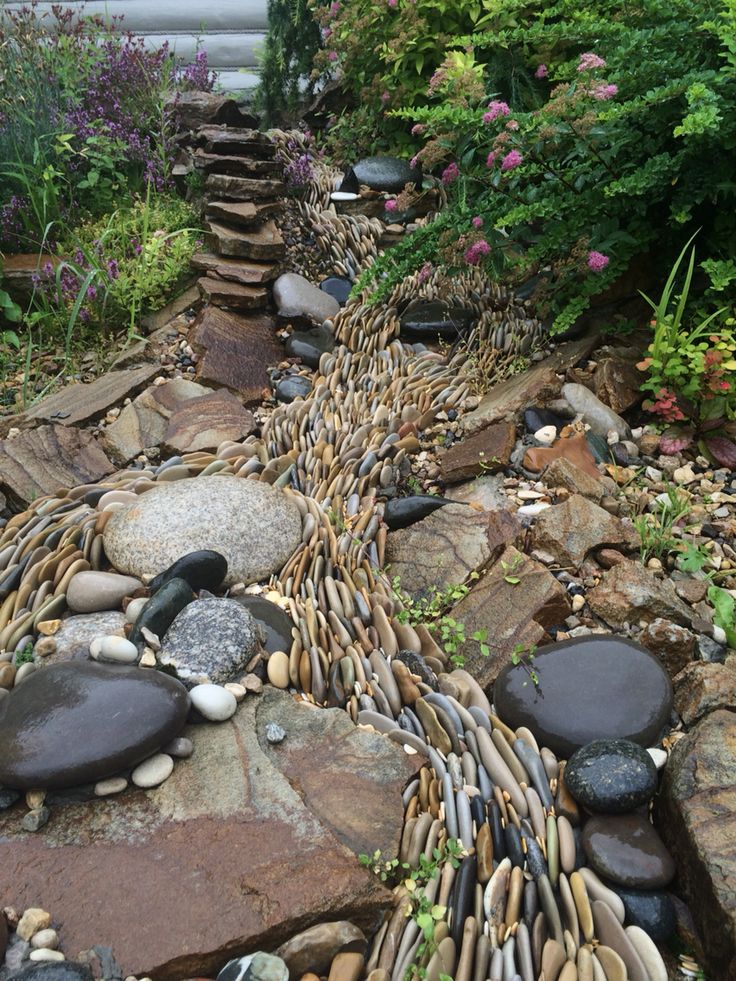
How do you create the right mix of native and non-native species in a dry garden? “Request natives. While most large commercial nurseries don’t carry a wide selection of native species to the area, smaller nurseries usually have a better selection and can point you towards plants that thrive in the local climate,” says Nolan.
4. Make a small garden feel larger, with layering.
Above: Gardens you can (almost) fit in your pocket can still produce a large visual impact despite their diminutive size, and usually are not huge water guzzlers.Nolan believes that not all gardens need to be bone dry. A good mix of plants—including those which significantly reduce water consumption and others that are a bit more thirsty—is fine.
How do you create a layered look in an existing garden? “When you’re looking to add to your already-established garden, steer clear of heavy water consumers and look to either native or drought tolerant species,” says Nolan.
5. Embrace harsh beachfront climates, with succulents.
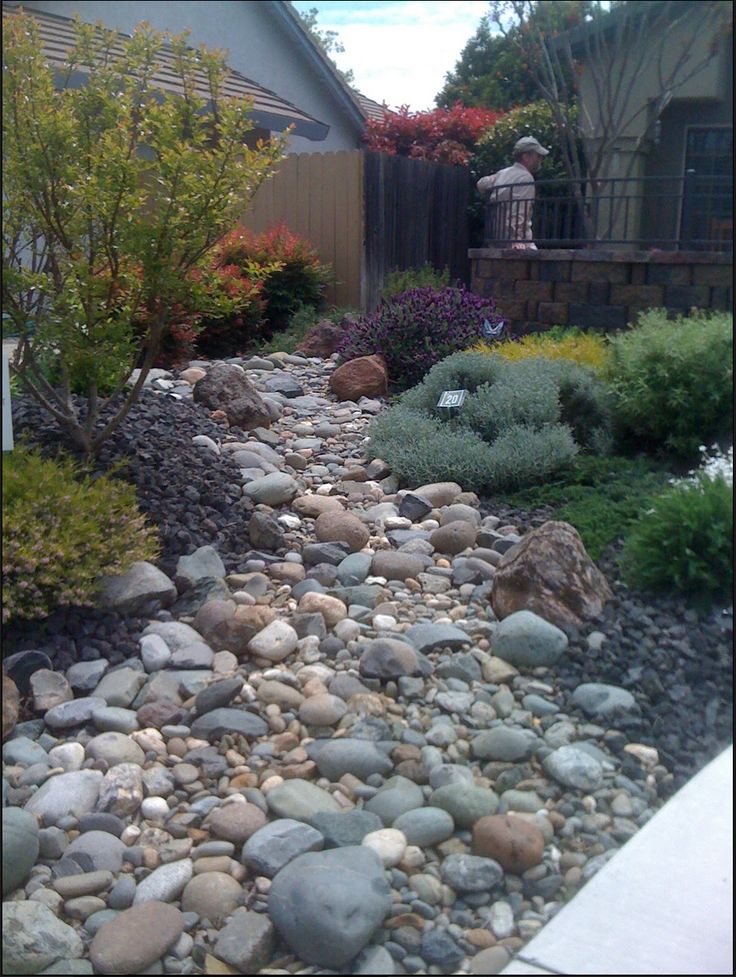 Above: In Los Angeles, dwarf olives (O. europaea ‘Mantra’) mix with succulents and Stipa feather grass to “soften board-formed-concrete walls,” writes Nolan.
Above: In Los Angeles, dwarf olives (O. europaea ‘Mantra’) mix with succulents and Stipa feather grass to “soften board-formed-concrete walls,” writes Nolan.Nolan says, “Beach-front properties can be hard, and this one is so masterfully done because it’s three textures: a solid hedge of dwarf olive mixed with a lush agave and succulent garden and the Mexican feather grasses make it informal and add movement.”
What are perfect plants to choose for seaside gardens? “Succulents are perfect for seaside gardens because that is where most succulents are native to around the world and are able to handle not only the sun but the near constant wind and salt air,” says Nolan.
6. Don’t dismiss the obvious choices for container gardens.
Above: Drought-tolerant plants such as snake plant Sansevieria trifasciata and cactus Cleistocactus need to be watered once a month.When considering plants for your home or office, the ability for your leafy addition to be fuss-free and still survive after being potentially neglected are a must.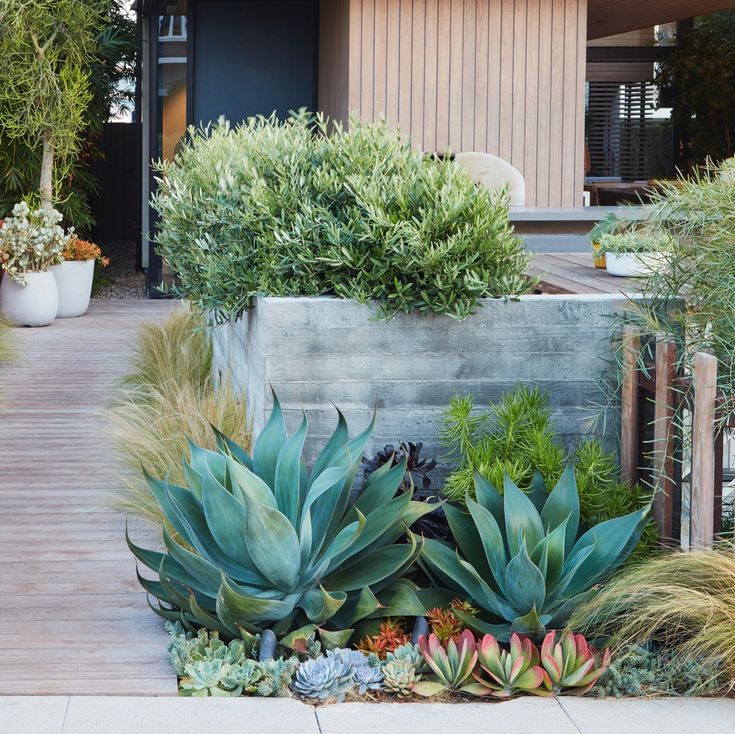 “The sansevieria gets a bad wrap for being predictable when it’s really the chicest of interior plants,” says Nolan. “There are now dozens of varieties and doing a few varieties gives you a cool mix of colors and textures. Add a few cactus to the mix and it’s a garden you can enjoy with minimal care.”
“The sansevieria gets a bad wrap for being predictable when it’s really the chicest of interior plants,” says Nolan. “There are now dozens of varieties and doing a few varieties gives you a cool mix of colors and textures. Add a few cactus to the mix and it’s a garden you can enjoy with minimal care.”
What are common houseplants you also can choose for outdoor container gardens? “Mother-in-law’s tongues are the workhorses of houseplants, and combined with Cleistocactus, you will have a lush planting that requires almost no maintenance with minimal watering,” says Nolan.
7. Rely on already-established plants to create privacy.
Above: Two date palm trees (Phoenix dactylifera) impart a statuesque presence to layered privacy plantings at the perimeter of a swimming pool.Well-established bamboo (shown above) was left in place because it thrived in the clay and provided an efficient screen, but Nolan says, “We ended up removing a large patch of grass and installing the Phoenix dactylifera to give the pool a graphic element, and added the soft Acacia iteaphylla to create another layer.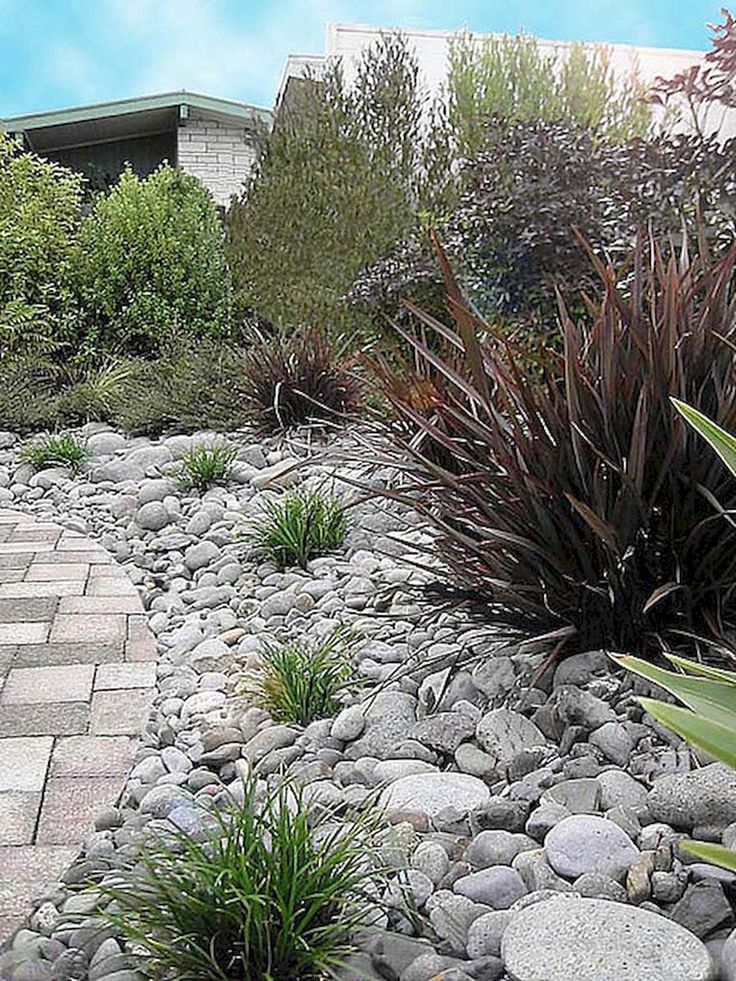 ”
”
Why should you try to work around established plants when designing a dry garden? “Leave established plants because the longer an ornamental plant has grown in, the less water it needs,” says Nolan.
8. Say hello to the overlooked aloe.
Above: A crested Myrtillocactus (M. geometrizans cristata) in the foreground “shares a narrow balcony with potted Furcraea macdougalii and Aloe barberae.” says Nolan.This small space project feels cohesive because of “the repetition of specific plants in their containers and a muted color palette,” says Nolan.
Why should you include aloes (which are often overlooked) in a dry garden? “They offer scale in any desired application, from tree aloes to ground cover varieties,” says Nolan. “There are dozens of bloom colors as well, which contradicts the notion that dry gardens are not colorful.”Above: A hardcover copy of Dry Gardens: High Style for Low Water Gardens is $34.43 at Amazon.
See more ideas for design dry gardens in our curated guides to Hardscape 101, including special sections on Gravel 101 and Decks & Patios 101.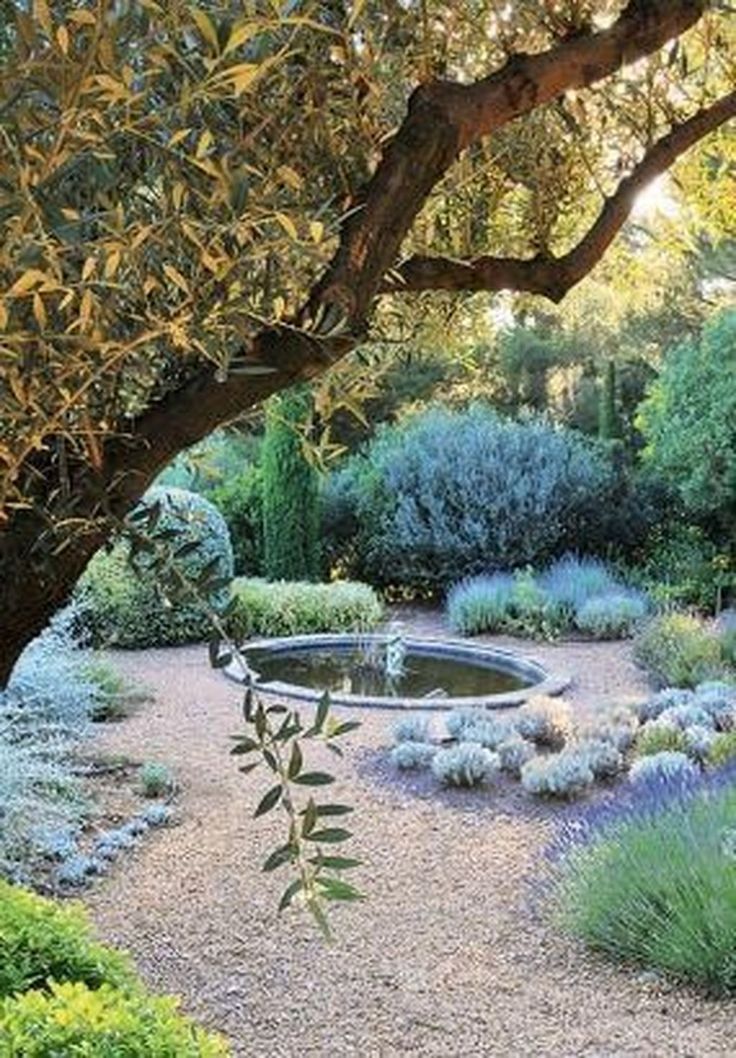 See more of Nolan’s gardens (and more tips for Dry Garden Design):
See more of Nolan’s gardens (and more tips for Dry Garden Design):
- Designer Visit: A Garden Hidden in SF’s Mission District, by Daniel Nolan
- Required Reading: Succulents, The Ultimate Guide
- Landscaping Ideas: 8 Surprising Ways to Use Corten Steel in a Garden
- Expert Advice: 11 Tips for Gravel Garden Design
- Can This Garden Be Saved: “It Barely Rains; I Live in a Desert”
- Steal This Look: An Outdoor Living Room in SF, Heated Sofa Included
design of unique and ready-made options (75 photos)
Most recently, oriental ideas began to be used for landscape design and gradually they appeared in our summer cottages near country mansions. We are talking about a dry stream - this is an element for decorating your own earthen area.
Nowadays, the garden landscape is demanding and more and more people are trying to keep up with fashion. Therefore, the imitation of a dried-up stream with flowers and pebbles did not stand aside.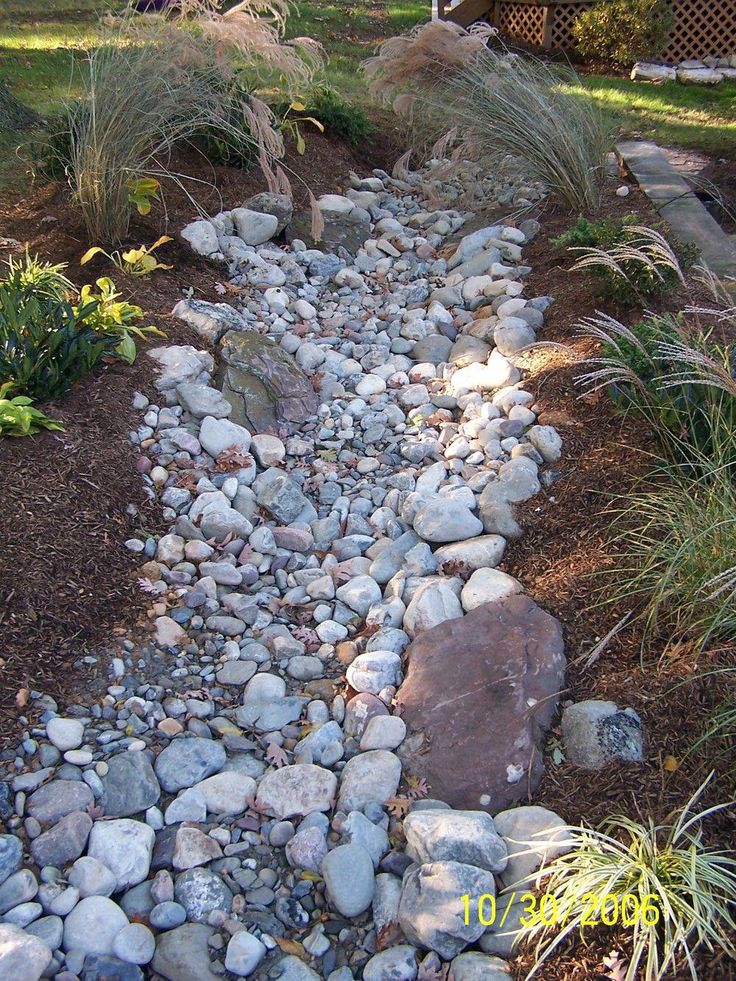
Brief content of the article:
The origin of the dry stream and what it is for
Residents of Japan create a spirit of solitude in their gardens. Such an atmosphere calmly affects the general condition and is not at all annoying. But our people are not accustomed to the laws of the East, we cannot see the source of appeasement in our native places.
Of course, the comparisons are incorrect, but nothing can be done. Most summer residents are happy to use Japanese ideas. For example, a dry stream, at first glance, nothing complicated - pick up a place, dig a hole, fill it with pebbles, and plant plants on the banks.
But keep in mind that without skills and planning, you will end up with an unnecessary and not beautiful element in the garden. Let's analyze all the stages of creating a dry stream with your own hands.
Choose the right place
Explore the suburban area to the smallest detail.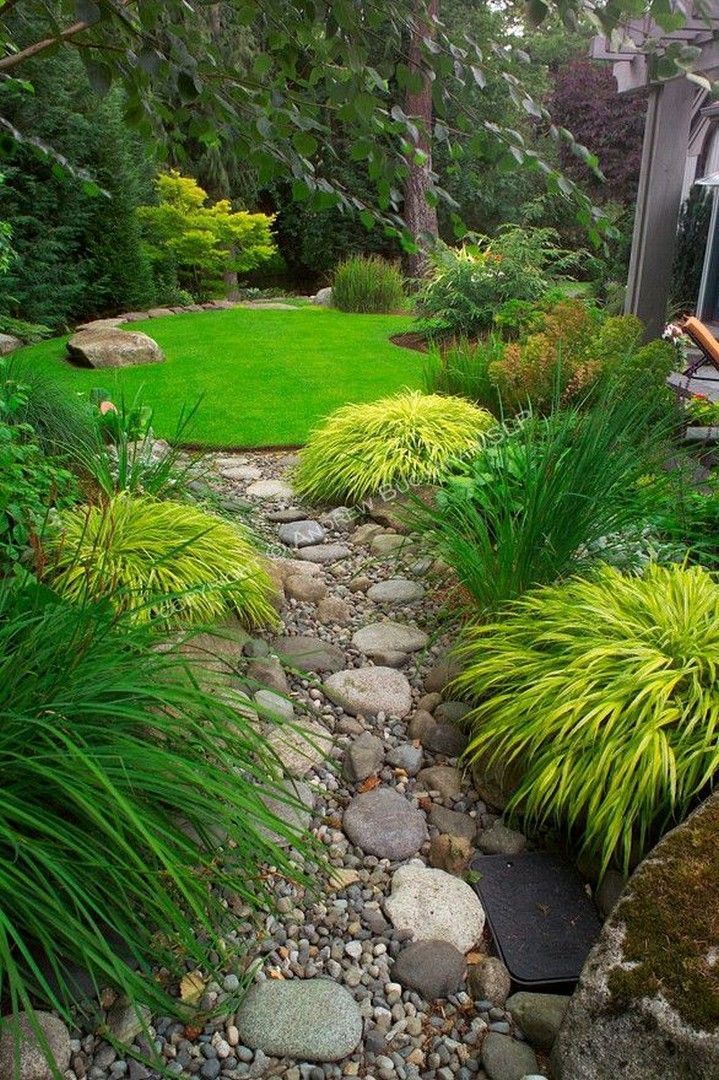 There will definitely be flaws that should be masked; a visual rocky bed will help in this. A dry stream in the garden will not only decorate a small area, but visually enlarge it, dividing functional areas among themselves.
There will definitely be flaws that should be masked; a visual rocky bed will help in this. A dry stream in the garden will not only decorate a small area, but visually enlarge it, dividing functional areas among themselves.
The first and important step
The first step is to draw the borders of the decoration. Draw contours with sand - pencils will not be useful. Remember, the steeper and unnatural you create the stream, the more natural the stream will look. Place the beginning on a hill.
Depth of the channel
Here, focus on the width of 1: 0.5 if it is 1.5 m, then the depth is 0.75 cm. In the case when the width is 1 m, the depth is 0.5 cm. In our article you can find a photo of a dry stream. They show more detailed steps that should be followed correctly in order to achieve the best result.
Digging moment
Feel free to dig, just remember that the walls of the recess should be at an angle of no more than 50 degrees.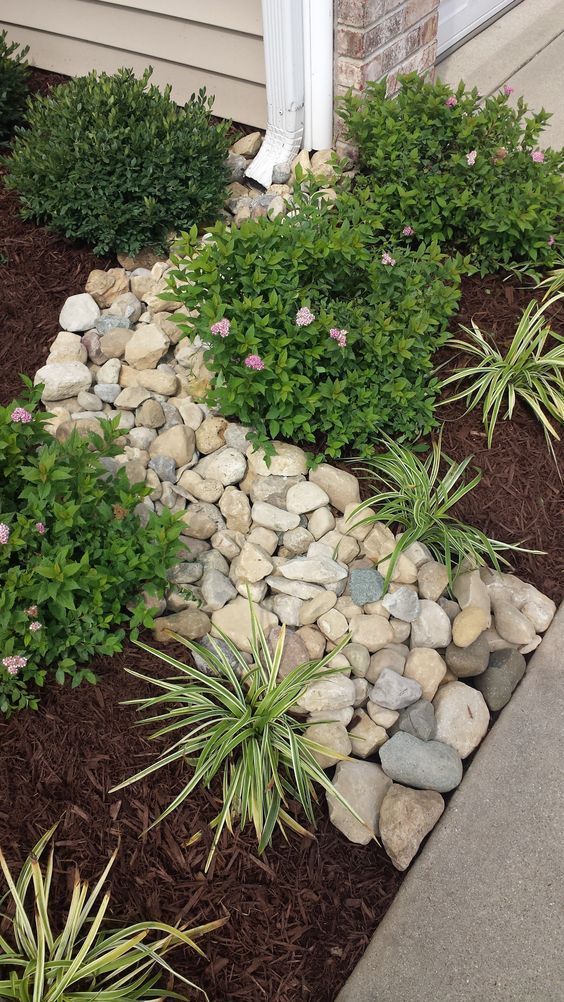 While digging, discard the weeds preferably along with the roots.
While digging, discard the weeds preferably along with the roots.
Drainage of a "dry" pond
Concrete, of course, will not work. In our case, everything is much simpler, purchase any dense material in a hardware store, for example, a polymer film or roofing material.
Bottom
Spread a layer of crushed stone or expanded clay, about 7 cm and sprinkle with sand. And now everything interesting begins - we begin to lay out the stones.
Pebbles, cobblestones, stones…
Different sizes of material will suit you, both small and large, let your imagination run wild here. Large, medium stones, small pebbles in a grayish-blue tint.
When designing a dry stream, you can make the effect of water by painting the stones with varnish or a special blue or azure paint that shimmers in the dark.
Pond with a bridge
Only natural wood is suitable for building a bridge over a stream.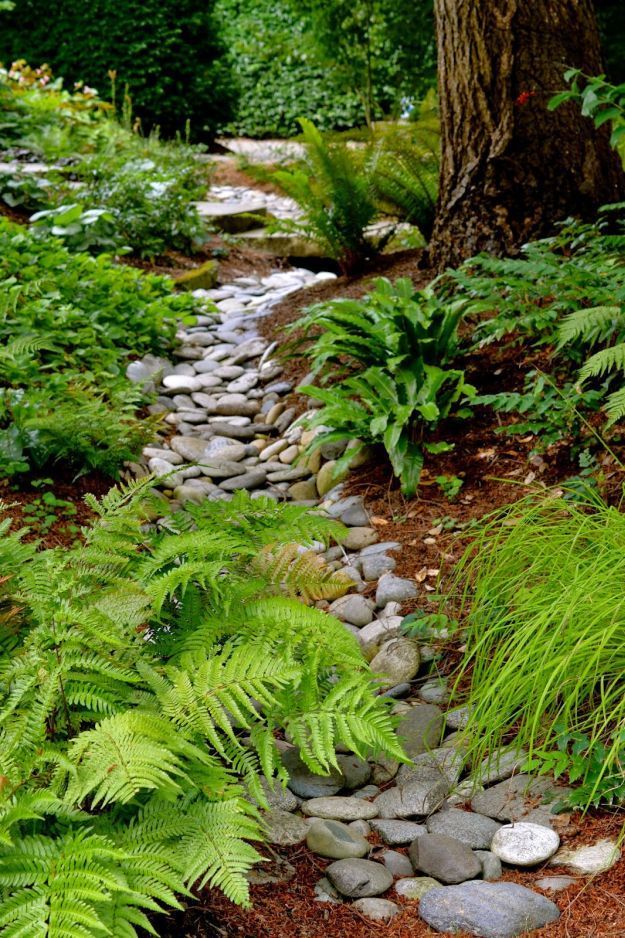 If there is an unused log in the yard - that's what you need.
If there is an unused log in the yard - that's what you need.
If you don't like this option, you can make your own ferry. And you can leave it as it is and lay stones on the surface.
Aquatic coastal plants
The main thing is not to overdo it with decorative elements, otherwise you will end up with a flower bed. Consider the composition of the soil, the supply of natural light and moisture indicators. Use herbaceous ground cover varieties for planting.
If you want plants to bloom, pick them in blue, purple. Bluebells, iris, lobelia, styloid periwinkle phlox, lily of the valley, all kinds of creeping herbs and many others look good near the stream. When designing a dry stream, you will need cereal grasses, bamboo and reeds.
Create wild growth along the shore using the previously listed plants. Their juicy, long bright green leaves will cope with the task by 100%.
If the plans include a large pond with needles, then plant a dwarf juniper, small pines, spruces and fir on the rocky shore.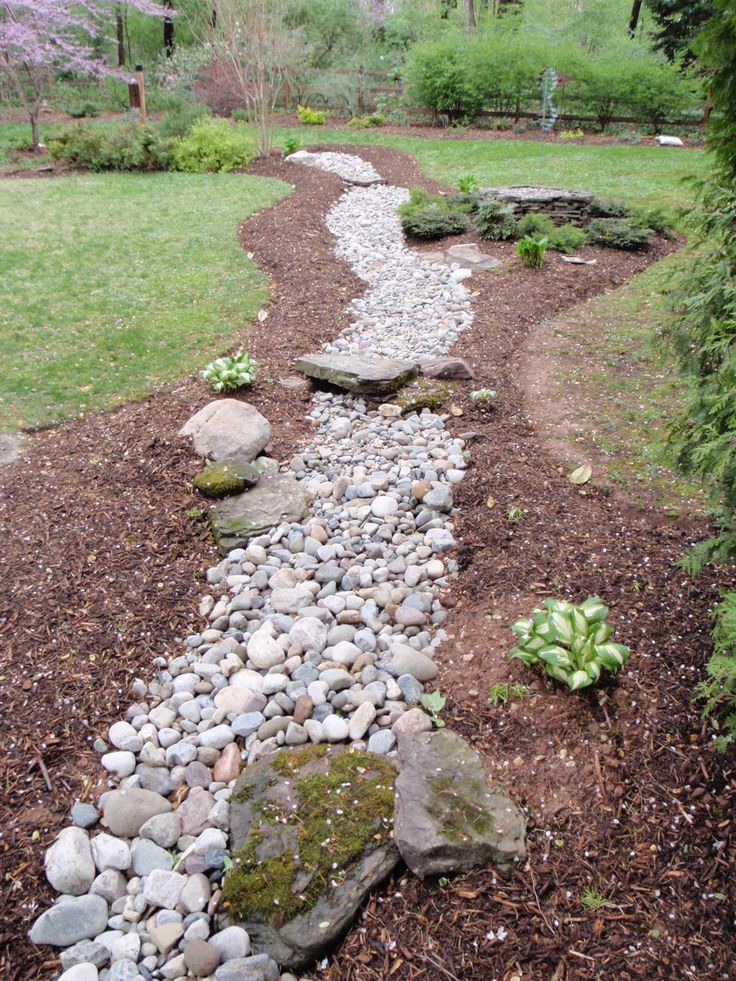 These plants thrive in sandy soil.
These plants thrive in sandy soil.
Choose low-growing shrubs carefully. Do not create unnecessary problems for yourself, because in autumn the bushes shed their leaves, and you have to collect them without unbending, they get stuck in the stones, and here you can’t do without a garden vacuum cleaner. If such a miracle technique is available on the farm, then feel free to plant cotoneaster and barberry. They will delight with the beauty of several seasons, attracting the eyes of the surrounding people. One-year-olds are considered special, such as: lily, narcissus, tulip, hyacinth.
Landscaping and a dry stream
Do not forget that following the rules and stages of creating a "dried riverbed" you will turn your summer cottage into a piece of paradise with your own hands. Do not be afraid to take care of the stream, it will not be difficult, but even interesting - this is so for the future.
Of course, the plants will have to be weeded and watered, insects must be destroyed in and under the stones.
But if you are a responsible and accurate gardener, then there will be no problems. Just do everything regularly and do not leave the stream unattended.
Important - a spectacular pond is not only for decoration, it is able to perform some other tasks:
- storm water run off smoothly;
- due to the retention of moisture under stones and pebbles, plants do not have to be watered often;
- a dry stream in landscape design will become the boundary between zones in the garden;
- the soil will become invulnerable and will not succumb to erosion;
- the garden will visually become larger.
Flowering plants can be used instead of small stones. That's just a beautiful stream will be during flowering.
The right landscaping stream will create a unique look in the garden, as if it had recently dried up and had water in it. And immediately after the rain, your creation will heal again and sparkle with reflections of the sun's rays.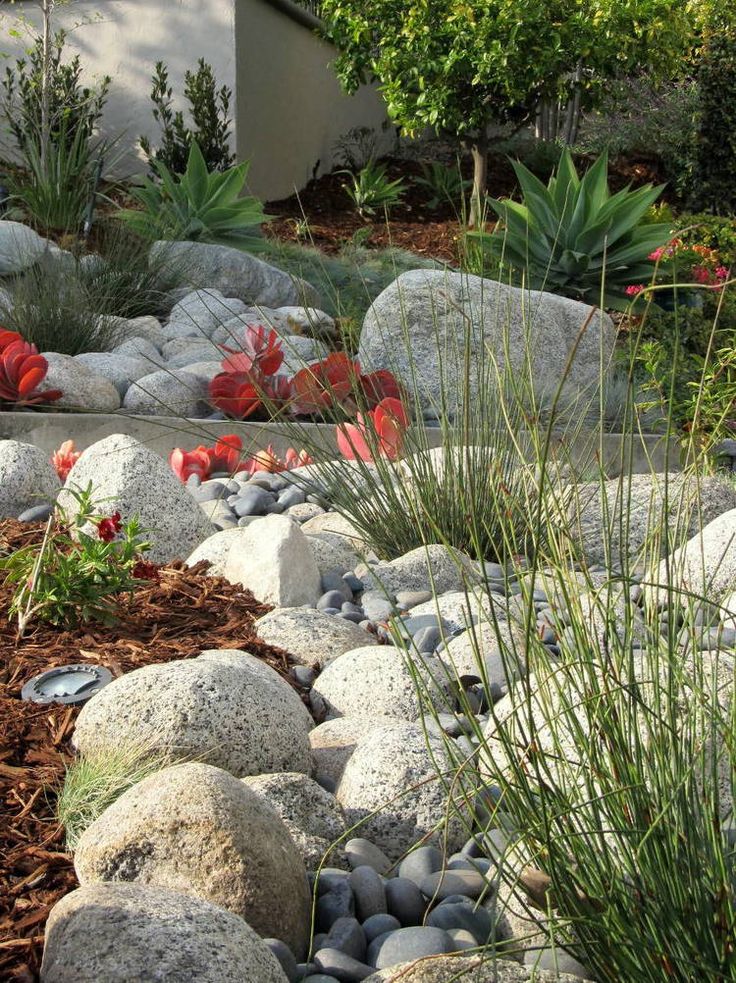
Feel free to use your imagination, read the advice of experts and get to work. Carefully study all the stages of creating a stream, purchase the necessary materials and plants. Hurry up, because the warm summer days pass quickly.
Dry stream photo
Post published: 09.10
Join the discussion:
detector
Garden decoration and landscaping ideas.
 Photos, tips, recommendations for garden design
Photos, tips, recommendations for garden design Popular garden design ideas
Soft transitions in the garden can be created through flower beds and paths, hedges, smoothly bordering lawns, an open terrace. A winding path takes longer to get to your destination than a straight one, making the garden seem bigger than it really is. In small gardens, frozen straight lines should also be avoided. An exception is the idea of regular style garden design.
Garden design idea No. 1: fresh flowers
Luxurious flower beds are the main decoration idea of the garden design. If you have a few empty spaces, fill them with pleasure with annuals like marigolds or zinnias. At the same time, those flower beds on which flowers are arranged with taste make an amazing impression. The combination of shades of different herbaceous perennials, such as liatris, ornamental onion, oriental poppy and phlox, gives a fresh effect.
A mini garden is a great idea for those who don't have a big family.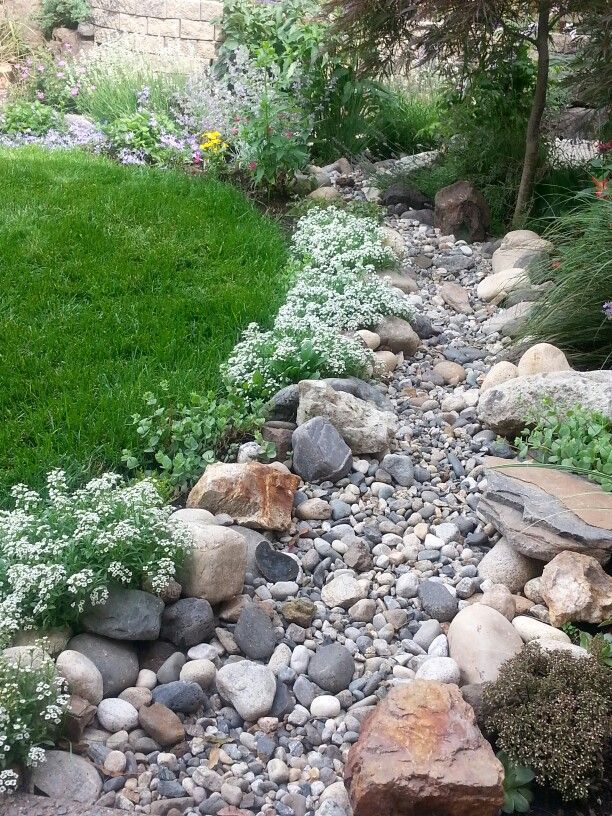 From such a bed, you can collect a full-fledged crop of greens and vegetables, and as diverse as from a real garden. Plant a little lettuce, two zucchini, a little carrot, a little radish, herbs - and this will be enough to provide yourself with vitamins.
From such a bed, you can collect a full-fledged crop of greens and vegetables, and as diverse as from a real garden. Plant a little lettuce, two zucchini, a little carrot, a little radish, herbs - and this will be enough to provide yourself with vitamins.
Evergreen barberries are grown for their beautiful dark green glossy foliage. They are undemanding, easy to care for and perfectly amenable to a haircut. The scope of its application of barberry in garden design is wide. Among them are unusually showy species and varieties with orange or red leaf ends, such as Juliana's barberry or the lanceolate variety of Ganyepin.
Deciduous barberries are very beautiful in autumn dress. Thunberg's red-leaved barberries shine brightly, for example, the columnar variety ' Hellmond Pillar '. Until winter, these bushes are piquant, decorated with orange or reddish fruits, which serve as an important source of food for birds.
Garden Design Idea #2: Pond
Every garden refreshes a garden pond.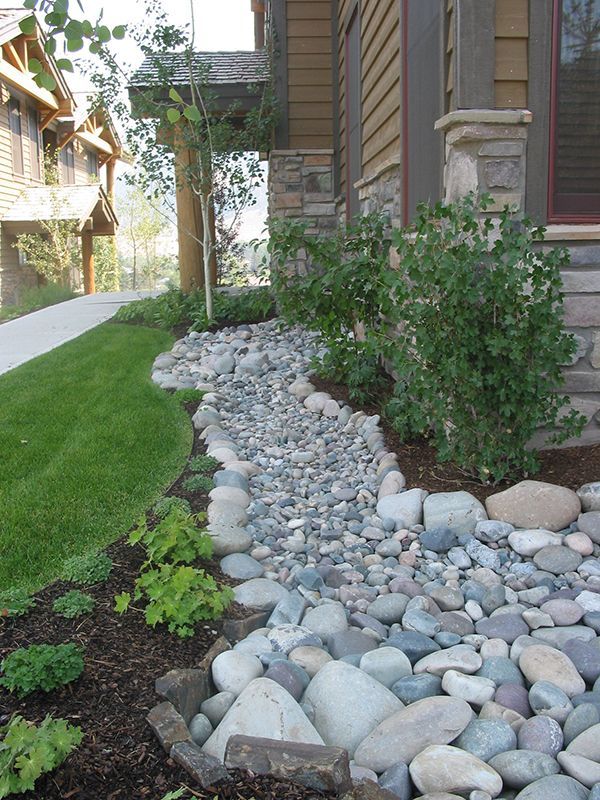 It is eye-catching, soothing and relaxing. You can create a water world in just a few square meters of your site. You will be fascinated by the Far Eastern flavor of the composition, in which nymphs in waterproof glass tubs are combined, for example, with papyrus and yellow iris. Wooden barrels and zinc trays, planted with marsh marigold, marsh sheikhzeria and hairy ranunculus, will invariably attract the attention of others.
It is eye-catching, soothing and relaxing. You can create a water world in just a few square meters of your site. You will be fascinated by the Far Eastern flavor of the composition, in which nymphs in waterproof glass tubs are combined, for example, with papyrus and yellow iris. Wooden barrels and zinc trays, planted with marsh marigold, marsh sheikhzeria and hairy ranunculus, will invariably attract the attention of others.
Garden design idea #3: green carpet
A green lawn is the pride of many amateur gardeners. But, if you make your choice on a perfectly even rectangular or square lawn, your garden will look very boring. Flowerbeds with a wide variety of plants, located on the lawn like islands, give it a unique charm. Then small groups of shrubs and trees can be planted on the lawn: they excite interest because they hide the areas behind them from view.
Garden Design Idea #4: Creative Cozy Nooks
You don't have to be in the public eye all the time in your own little paradise. Lattice arrangements with ornamental creepers, curly evergreen hedges and tall shrubs provide good protection from prying eyes. Plant props and wrought iron screens are great if you're short on space in your garden. In addition, they will create a feeling of spaciousness. Tightly weaved with climbing plants - clematis, honeysuckle or roses - these buildings look like beautiful works of art, and also hide the space behind them.
Lattice arrangements with ornamental creepers, curly evergreen hedges and tall shrubs provide good protection from prying eyes. Plant props and wrought iron screens are great if you're short on space in your garden. In addition, they will create a feeling of spaciousness. Tightly weaved with climbing plants - clematis, honeysuckle or roses - these buildings look like beautiful works of art, and also hide the space behind them.
Garden design idea #5: decorate the garden with a sculpture
The garden sculpture that you use to decorate your garden should be in harmony with the style of the house and fit into the overall design of the garden.
You can not only buy a sculpture, you can also make it yourself. But before you start making sculptural compositions and decorating the garden with them, you need to remember the proportions. The smaller your site, the smaller the size of the sculpture. Gnomes, house-movies, watermen, and other characters of Russian fairy tales will remind you of a fun childhood.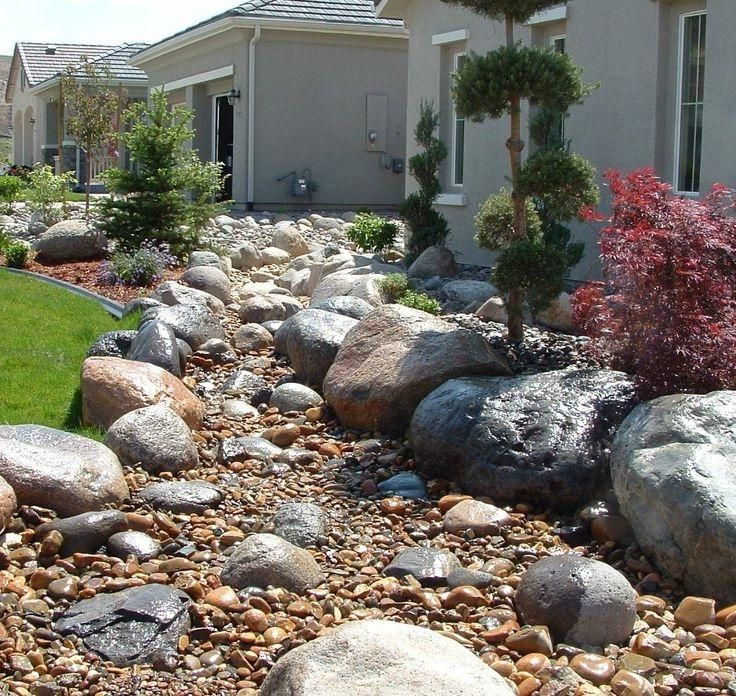
Bright sculptures will enliven any dark corner of the garden, make it much more fun.
A red ladybug will look great against the background of lush green grass. And only after looking closely, you can understand that this is an ordinary stone, painted with paints.
Garden design idea №6 ampelous plants
The most popular ampelous plants are ivy-leaved pelargonium, petunia, surfinia, nasturtium, fuchsia, verbena. They are planted in hanging baskets. Their advantage is that, firstly, they can decorate a small courtyard, a large garden, and a modest terrace, making them very beautiful and cozy.
Secondly, by constantly changing compositions in containers and hanging baskets, you can create a constant feeling of novelty.
Thirdly: hanging plants can be used to decorate nondescript elements of a site, to add bright color accents.
Fourth, they are very easy to care for. It is enough to water and feed them. No need to weed them, hill up, mulch.
